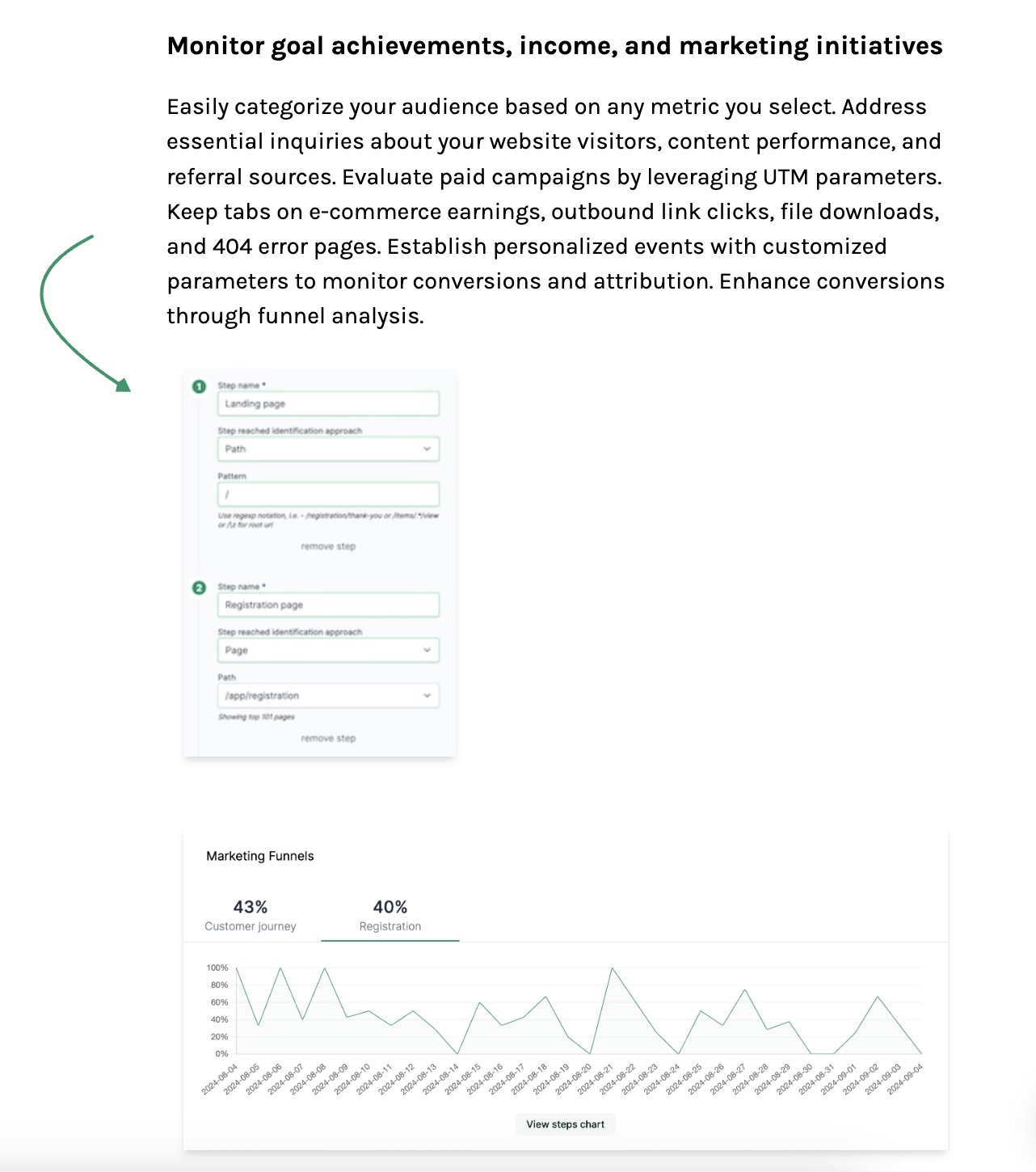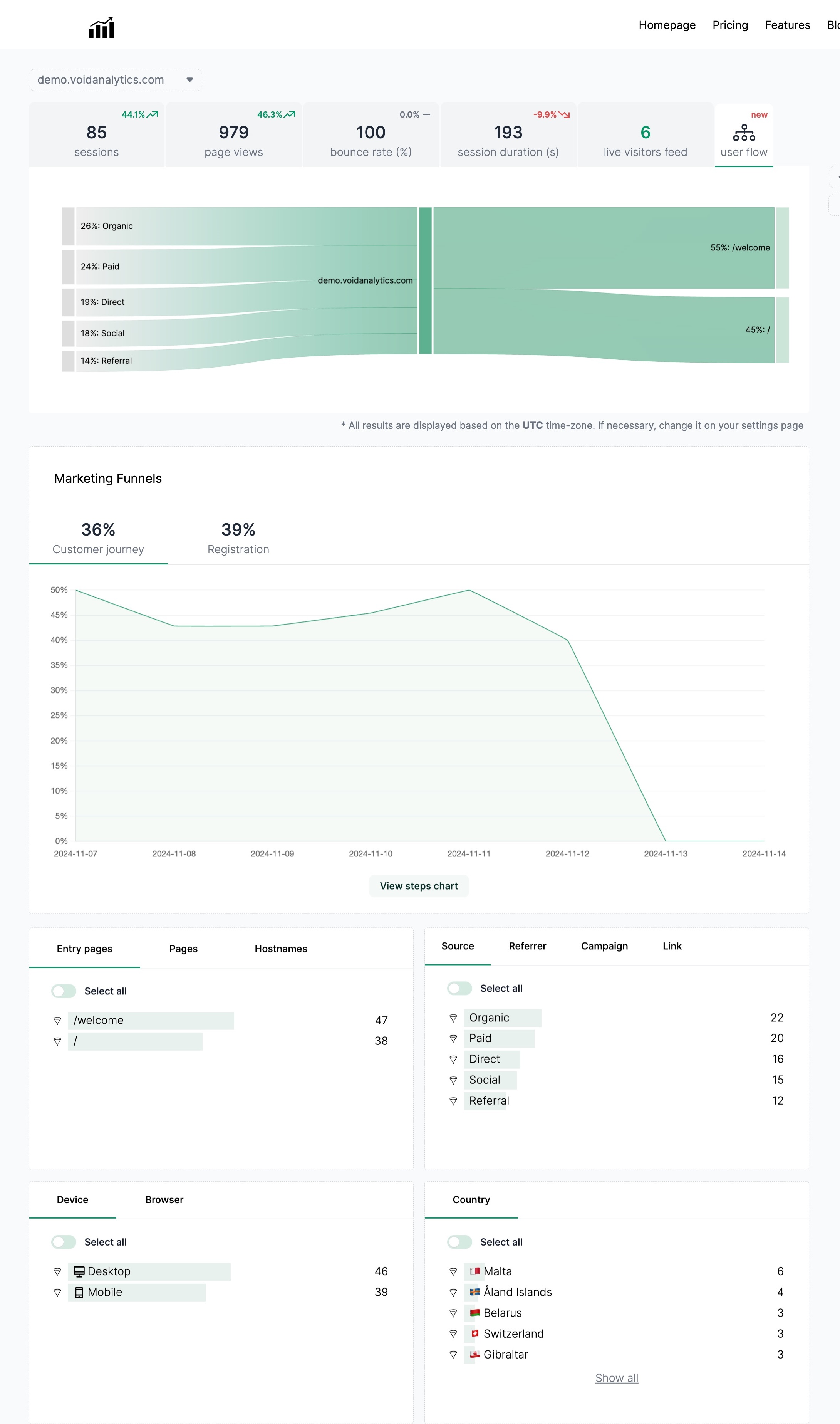What is Bounce Rate?
Published on 2024-02-08
Bounce rate is a critical metric in web analytics, indicating the percentage of visitors who leave your website after viewing only one page. A high bounce rate might suggest that users are not finding what they need or are dissatisfied with their experience, while a low bounce rate generally indicates engagement and interest.
How Bounce Rate is calculated?
Bounce rate refers to the percentage of sessions on your website that result in a bounce, meaning sessions that start and end on the same page of your site. It is calculated by dividing the number of bounces, also known as single-page sessions, by the total number of sessions on your site.
For instance, if 100 users visit your homepage (total sessions) and 5 of them leave the homepage without further interaction or navigation (single-page sessions), your homepage's bounce rate is 5%.
Bounce Rate = Single-page Sessions / Total Sessions
Interpreting Bounce Rate
Good Bounce Rate: Generally, a low bounce rate is desirable, as it suggests that visitors are engaging with your content and exploring multiple pages on your site. Good bounce rates typically fall below 40%.
Average Bounce Rate: An average bounce rate can vary significantly depending on the type of website and industry. However, a bounce rate between 40% and 60% is typically considered average.
Bad Bounce Rate: A high bounce rate, typically above 60%, may indicate issues such as poor website design, irrelevant content, slow loading times, or unclear calls-to-action. A consistently high bounce rate warrants attention and optimization efforts.
Reducing Bounce Rate
Improve Page Load Speed: Ensure your website loads quickly on all devices to prevent users from bouncing due to impatience.
Enhance Content Relevance: Provide valuable and relevant content that meets the expectations of your target audience. Use clear headlines, descriptive meta tags, and engaging visuals to capture attention.
Optimize User Experience (UX): Make navigation intuitive and user-friendly, with clear pathways to relevant information. Simplify forms, minimize pop-ups, and optimize for mobile devices.
Implement Clear Calls-to-Action (CTAs): Guide visitors towards desired actions with compelling CTAs placed strategically throughout your site.
A/B Testing: Experiment with different layouts, content formats, and CTAs to identify what resonates best with your audience.
Monitor and Analyze: Regularly review your website analytics, paying close attention to bounce rate trends. Identify pages with high bounce rates and investigate potential issues.
Leverage Remarketing: Target bounced visitors with remarketing campaigns to re-engage them and encourage return visits.
Improve Page Content: Ensure that landing pages offer valuable and engaging content, fulfilling user intent and addressing their needs effectively.
Good Bounce Rate: Generally, a low bounce rate is desirable, as it suggests that visitors are engaging with your content and exploring multiple pages on your site. Good bounce rates typically fall below 40%.
Average Bounce Rate: An average bounce rate can vary significantly depending on the type of website and industry. However, a bounce rate between 40% and 60% is typically considered average.
Bad Bounce Rate: A high bounce rate, typically above 60%, may indicate issues such as poor website design, irrelevant content, slow loading times, or unclear calls-to-action. A consistently high bounce rate warrants attention and optimization efforts.
Improve Page Load Speed: Ensure your website loads quickly on all devices to prevent users from bouncing due to impatience.
Enhance Content Relevance: Provide valuable and relevant content that meets the expectations of your target audience. Use clear headlines, descriptive meta tags, and engaging visuals to capture attention.
Optimize User Experience (UX): Make navigation intuitive and user-friendly, with clear pathways to relevant information. Simplify forms, minimize pop-ups, and optimize for mobile devices.
Implement Clear Calls-to-Action (CTAs): Guide visitors towards desired actions with compelling CTAs placed strategically throughout your site.
A/B Testing: Experiment with different layouts, content formats, and CTAs to identify what resonates best with your audience.
Monitor and Analyze: Regularly review your website analytics, paying close attention to bounce rate trends. Identify pages with high bounce rates and investigate potential issues.
Leverage Remarketing: Target bounced visitors with remarketing campaigns to re-engage them and encourage return visits.
Improve Page Content: Ensure that landing pages offer valuable and engaging content, fulfilling user intent and addressing their needs effectively.
By implementing these strategies and continually optimizing your website, you can reduce bounce rates and improve user engagement, ultimately driving conversions and achieving your business goals.

